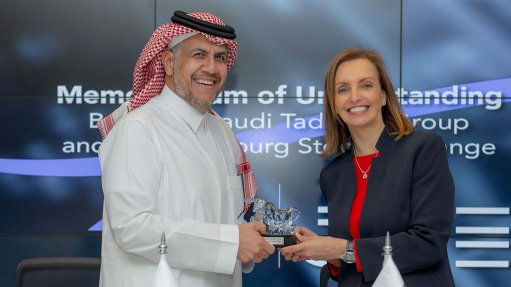Supply chain – the time of OT and IT convergence is here
This article has been supplied as a media statement and is not written by Creamer Media. It may be available only for a limited time on this website.
By George Senzere, solutions architect at Schneider Electric
Supply chains across industry are notoriously complex and more so when companies have a global reach. The industry is extremely competitive with some companies featuring mindboggling innovation which means organisations have to continuously ensure they stay one step ahead of the competition.
That said, supply chains remain fragile; however, if all the proverbial cogs are running the benefits are numerous: cost reduction, decreased inventory, and increase in asset utilisation.
To realise the above, many organisations are moving towards supply chain digitisation which in turn provides them with visibility and an entry point to gain a full view of their end-to-end supply chain networks.
Motion forward
Big data is also driving the move towards digitisation – a lot of information is collected across the entire chain network. With real-time, accurate data, this allows companies to swiftly pivot and respond to drastically changing situations and ensure responses are on point. Information is vital in dealing with constraints on supplies and transportation for example.
In challenging environments, industry is also implementing digital track and trace systems, using radio frequency identification (RFID) tags instead of bar codes, which increases visibility into the supply chain, providing valuable real-time data.
RFID offers great benefits as it can be read by proximity sensors remotely and the data quickly aggregated into the cloud and interchanged through various other IoT systems. When data is gathered this way, it enables quicker execution of equally important tasks or processes such as observing transit conditions of goods, inventory automation, various reporting and dashboarding and of course automated replenishment of inventory. All without human intervention.
The collected information also supports business intelligence with the visualisation of various metrics which offer rapid information on vital information such as tracking staff levels year- on-year or inventory volumes. In short digital track and trace simply outperforms humans in terms of processes.
Keeping up
Considering the above, it’s clear that OT needs to evolve, and quickly. Traditionally, OT controls physical hardware and takes care of safety. Today the lines between and OT and IT are fading. In the past, OT systems such as SCADA and Distributed Control Systems were proprietary, today these systems are open, flexible and offer the ability to speak to other systems outside of their primary domains.
The interoperability of OT systems can breakdown the silos of information whilst providing organisations with the ability to integrate it with various IT systems. In fact, we are going to see IT functionality increasingly being built into OT, allowing these systems to for example to seamlessly connect with the cloud and work in conjunction with the onsite edge applications.
The human factor
There is no doubt that the continued convergence between IT and OT have a lot to offer, however, the human element remains key.
Training must be prioritised to ensure employees are well versed in newly deployed technologies and systems. Here, an interesting and even immersive training approach would be to use the simulation of the actual processes in a digital twin environment.
In this setup, a virtual environment mimics real-world operations; processes are therefore very similar to the authentic. This environment would then be used to provide training for the would-be operators.
It is indeed a power training tool as the environment can be made available prior to actual implementation which means employees are familiar with the processes and hit the road running.
Comments
Announcements
What's On
Subscribe to improve your user experience...
Option 1 (equivalent of R125 a month):
Receive a weekly copy of Creamer Media's Engineering News & Mining Weekly magazine
(print copy for those in South Africa and e-magazine for those outside of South Africa)
Receive daily email newsletters
Access to full search results
Access archive of magazine back copies
Access to Projects in Progress
Access to ONE Research Report of your choice in PDF format
Option 2 (equivalent of R375 a month):
All benefits from Option 1
PLUS
Access to Creamer Media's Research Channel Africa for ALL Research Reports, in PDF format, on various industrial and mining sectors
including Electricity; Water; Energy Transition; Hydrogen; Roads, Rail and Ports; Coal; Gold; Platinum; Battery Metals; etc.
Already a subscriber?
Forgotten your password?
Receive weekly copy of Creamer Media's Engineering News & Mining Weekly magazine (print copy for those in South Africa and e-magazine for those outside of South Africa)
➕
Recieve daily email newsletters
➕
Access to full search results
➕
Access archive of magazine back copies
➕
Access to Projects in Progress
➕
Access to ONE Research Report of your choice in PDF format
RESEARCH CHANNEL AFRICA
R4500 (equivalent of R375 a month)
SUBSCRIBEAll benefits from Option 1
➕
Access to Creamer Media's Research Channel Africa for ALL Research Reports on various industrial and mining sectors, in PDF format, including on:
Electricity
➕
Water
➕
Energy Transition
➕
Hydrogen
➕
Roads, Rail and Ports
➕
Coal
➕
Gold
➕
Platinum
➕
Battery Metals
➕
etc.
Receive all benefits from Option 1 or Option 2 delivered to numerous people at your company
➕
Multiple User names and Passwords for simultaneous log-ins
➕
Intranet integration access to all in your organisation

















